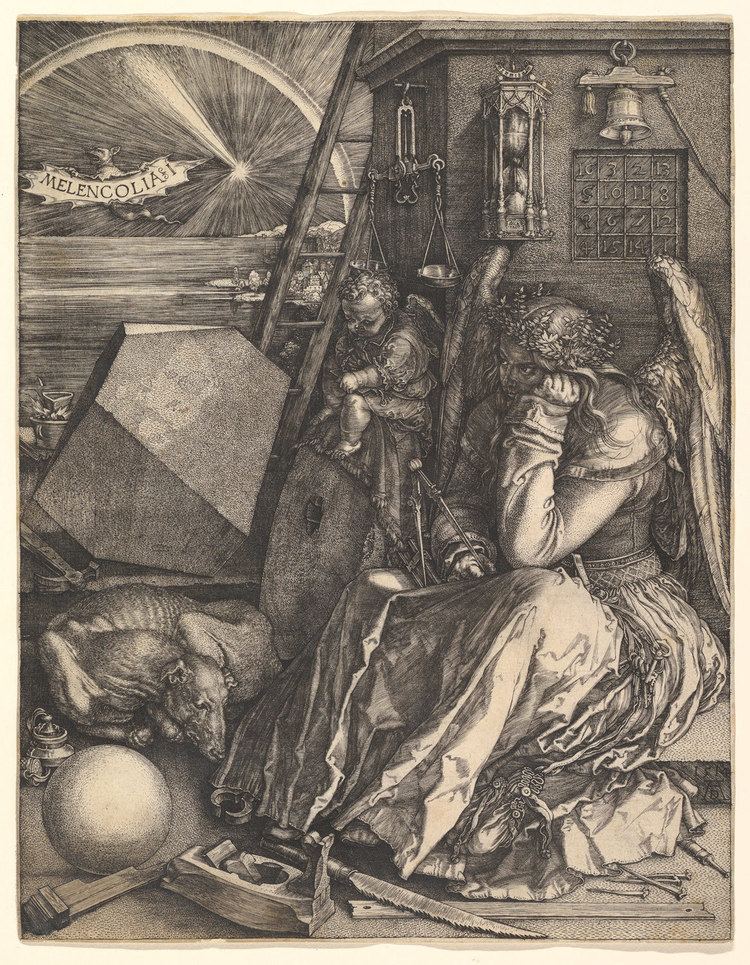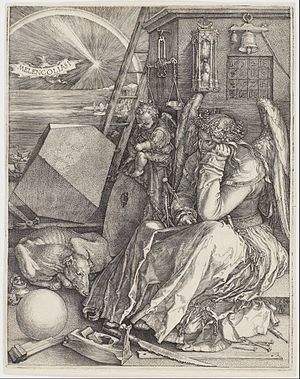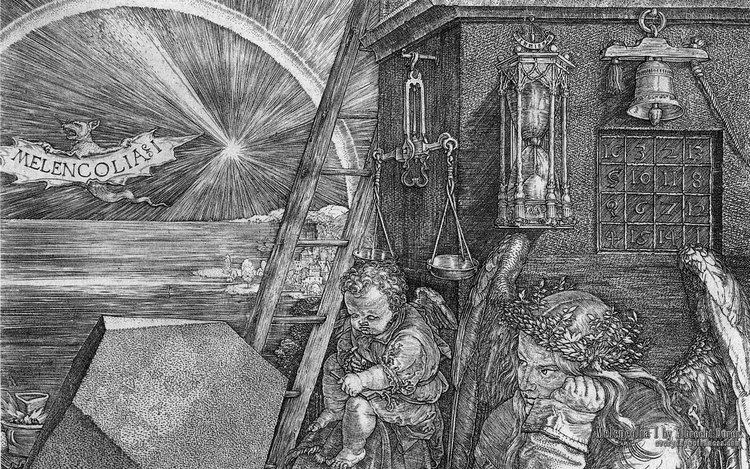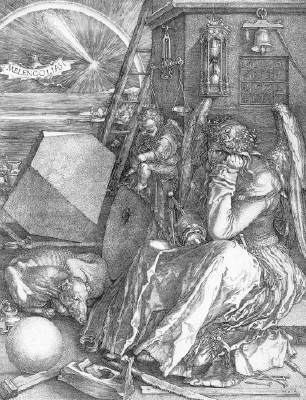Year 1514 Artist Albrecht Dürer Location Staatsgalerie Stuttgart Period Northern Renaissance | Dimensions 31 cm x 26 cm Created 1514 | |
 | ||
Similar Albrecht Dürer artwork, Engraving | ||
Albrecht d rer s melencolia i
Melencolia I is a 1514 engraving by the German Renaissance master Albrecht Dürer. It is an allegorical composition which has been the subject of many interpretations. One of the most famous old master prints, it has sometimes been regarded as forming one of a conscious group of Meisterstiche ("master prints") with his Knight, Death and the Devil (1513) and Saint Jerome in his Study (1514).
Contents

The engraving measures 24 × 18.8cm.
Salvatore sciarrino melencolia i
Interpretations

The work has been the subject of more modern interpretation than almost any other print, including a two-volume book by Peter-Klaus Schuster, and a very influential discussion in Erwin Panofsky's Dürer monograph. Reproduction usually makes the image seem darker than it is in an original impression (copy) of the engraving, and in particular affects the facial expression of the female figure, which is rather more cheerful than in most reproductions. The title comes from the (archaically spelled) title, Melencolia I, appearing within the engraving itself. It is the only one of Dürer's engravings to have a title in the plate. The date of 1514 appears in the bottom row of the magic square, as well as above Dürer's monogram at bottom right. It is likely that the "I" refers to the first of the three types of melancholia defined by the German humanist writer Cornelius Agrippa. In this type, Melencholia Imaginativa, which he held artists to be subject to, 'imagination' predominates over 'mind' or 'reason'.

One interpretation suggests the image references the depressive or melancholy state and accordingly explains various elements of the picture. Among the most conspicuous are:


An autobiographical interpretation of Melencolia I has been suggested by several historians. Iván Fenyő considered the print a representation of the artist beset by a loss of confidence, saying: "shortly before [Dürer] drew Melancholy, he wrote: 'what is beautiful I do not know' ... Melancholy is a lyric confession, the self-conscious introspection of the Renaissance artist, unprecedented in northern art. Erwin Panofsky is right in considering this admirable plate the spiritual self-portrait of Dürer."
Dürer's Melencolia is the patroness of the City of Dreadful Night in the final canto of James Thomson's poem of that name.
